A billionaire hopes to change our understanding of sea life and save the oceans with a research vessel straight out of 'Star Trek'

- OceanXplorer, a 285-foot research vessel, contains cutting-edge tools for ocean science.
- Billionaire Ray Dalio bought the former oil ship and helped transform it into a world-leading research vessel.
The OceanXplorer is both science and spectacle.
The 285-foot research vessel gives ocean scientists access to virtual reality, submersibles, a helicopter, and onboard laboratories, all in a setting designed to evoke a Marvel movie.
"It has basically every tool a researcher could dream of for exploring the deep," Eric Stackpole, a remotely operated vehicle expert, told Business Insider.
Stackpole is part of a team that traveled on the ship from a volcanic archipelago in the North Atlantic to just south of the North Pole for National Geographic's new show "OceanXplorers."
See what it was like to follow polar bears from the sky and study sharks from the seafloor.
OceanX converted a former oil vessel into a research ship.
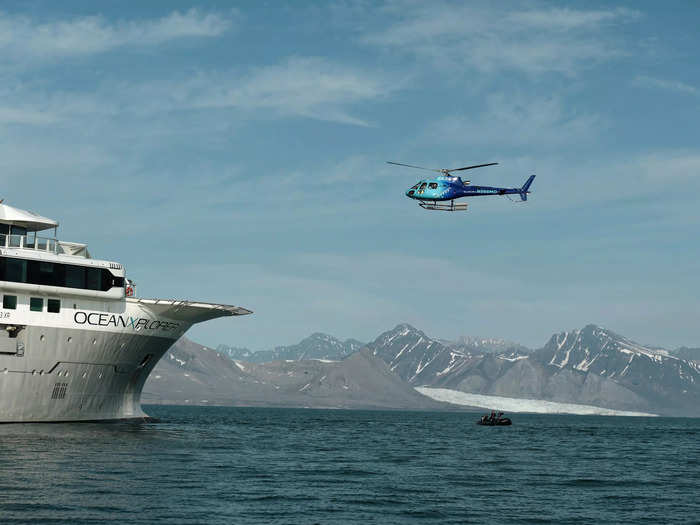
Billionaire Ray Dalio bought the boat in 2016. It was an oil ship at the time and he and his son Mark Dalio spent the next four years transforming it into a one-of-a-kind research vessel capable of real-time scientific analysis. Experts from the Woods Hole Oceanographic Institution consulted to ensure scientists would have everything they needed on board.
For example, it might take a typical research vehicle several years to get DNA sequencing results back and then return to the same location equipped with that data.
With OceanXplorer's onboard lab, researchers can collect samples, process the data in real-time, and then make informed decisions based on what they find.
"We feel like it's a lot more efficient," said Mark Dalio, co-CEO of OceanX, the company that owns OceanXplorer.
It's helping scientists solve some of the sea's greatest mysteries.
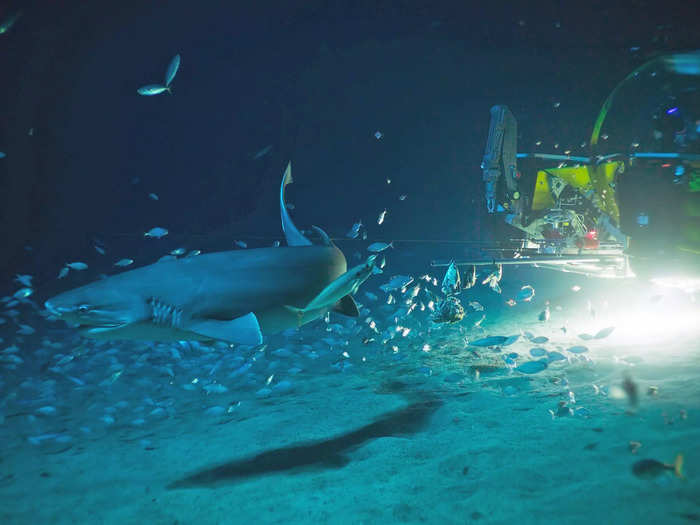
The vessel's pair of three-seater submersibles can descend over 3,000 feet and stay on the seafloor for 12 hours.
As a passenger in one, biologist Nigel Hussey witnessed something he'd never seen before, a Greenland shark feeding in its own habitat.
The sharks can live for over 400 years, the longest of any vertebrate, but they spend much of their time in deep, difficult-to-access waters of the Arctic.
"To actually witness and see an animal that you've committed a huge amount of time, blood, sweat, and tears to studying, it's indescribable how fabulous it is," Hussey said in National Geographic's show.
Seeing the cautious way the shark approached food could indicate one reason the species lives so long, Hussey said. Some researchers want to learn more about these animals in the hopes of lengthening human lifespans.
It was built for many kinds of science.
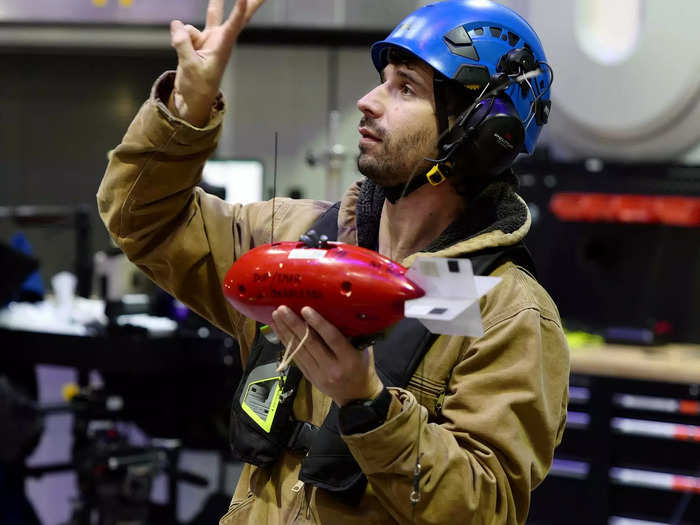
On board, scientists can use the four labs to analyze samples, sequence DNA, and study specimens. Meanwhile, ROVs explore the deep; sonar maps the seafloor; and a sampling tool measures the water's temperature, pressure, and salinity.
"I think the most unique kind of throughline is the cross-disciplinary nature of the ship," Mark Dalio said. Meaning researchers who study sharks, whales, squid, and polar bears can all make use of the vessel.
OceanX not only helps scientists reach locations from the subtropical Bahamas to freezing Svalbard, it brings along filmmakers and photographers to document the work as it's taking place.
The National Geographic show highlights the work of researchers who used the ship's helicopters to study polar bears' disappearing habitats and another group who dove deep in submersibles to study sperm whales' prey.
"Ultimately, our goal is to help raise awareness of what this majority of our planet is like," Stackpole said. "If you don't understand it, you can't affect it."
Some of the technology feels like living in the future.
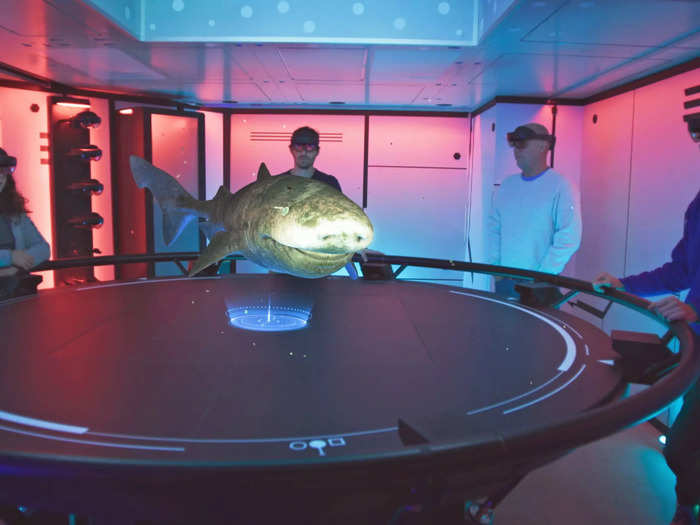
OceanX partnered with Microsoft to create a "holographic laboratory" on the ship. The cutting-edge technology makes complex data easy to visualize.
Scientists wearing HoloLens headsets can view a simulated ocean floor. It can help turn numbers in a graph into a representation of an underwater environment, incorporating data from sperm whale location tags, sonar readings, and temperature and salinity information.
"We were able to stand around this table and in three dimensions, manipulate a map of what the bottom looks like," Stackpole said of an ocean-floor visualization. "It felt like living in the future."
There are some bonuses to being on a billionaire's boat.
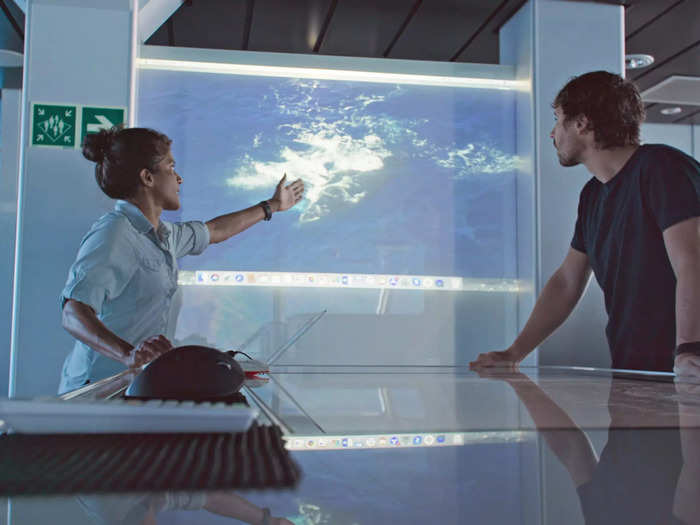
The vessel was built for scientists, but it still has some amenities you might not typically find on a research ship.
"There was a drawer that was just filled with ice cream you could get whenever you want," Stackpole said. "That felt like an indulgence for an open ocean expedition."
It's not quite like going on a luxury cruise, though. There's room for about 72 people on board, but passengers have to share rooms with bunk beds.
The ship is supposed to look like something out of 'Star Trek.'
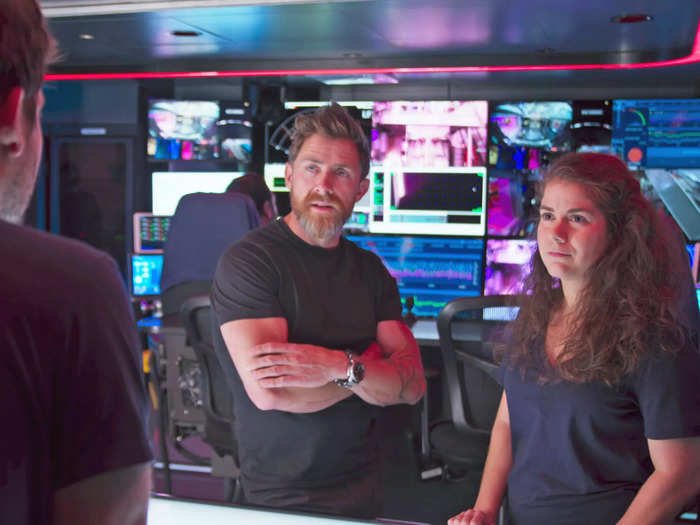
Mark Dalio worked as a National Geographic filmmaker in the past and always wanted the OceanXplorer to be used for scientific storytelling.
Director James Cameron and his team — who have experience designing the filmmaker's former research vessel — offered advice about creating spaces that were both functional and futuristic. Specifically, Cameron suggested they take inspiration from a "Star Trek" spacecraft.
"If you're going to do all that work, make it look and feel like something like the 'Starship Enterprise' of the oceans," Dalio said. "Make it inspirational and aspirational for the next generation of scientists and students and educators."
Art director Page Buckner, who worked on "Iron Man 2," "Jurassic World," and other movies, also helped make the ship camera-ready.
"Everything can be ready to go from a filmmaking standpoint" when scientists are seeing something new or exciting, Dalio said. "It allows us to be a lot more in the moment during that and really capture that in a way that is very authentic."
In fact, most of the ship was designed with documentaries in mind.
The next big project is a focus on fish.
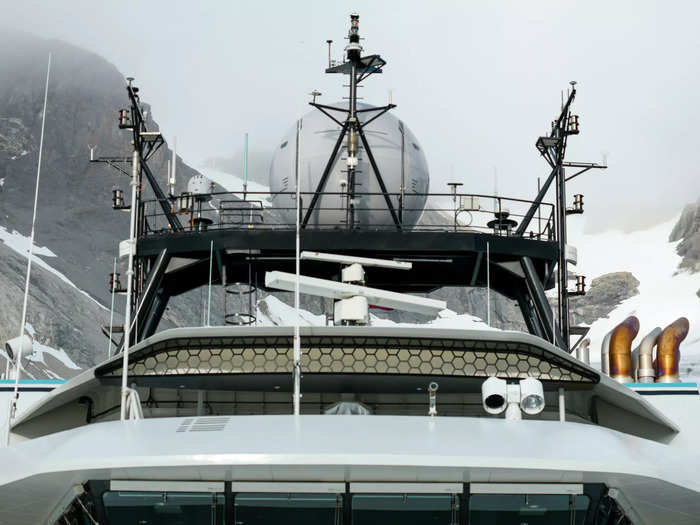
Mark Dalio plans to keep the ship in Southeast Asian waters for the next five years. The Phillippines is a hot spot for a variety of marine life.
One goal is to learn more about the region's biodiversity to help find ways to protect vulnerable species.
Techniques like whole genome sequencing will give scientists a clearer picture of what fish are present and what animals are eating them.
Other research will focus on gathering data to document climate change, studying coral reefs, and finding potential areas for preservation that could be used for carbon credits.
All this feeds into OceanX's overarching goal, which is to foster the next generation of ocean scientists. "We need a next generation of ocean scientists and ocean storytellers," Dalio said.
Popular Right Now
Advertisement